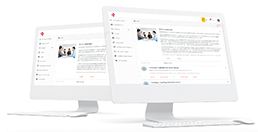Benefits of Experience API, xAPI and Tin Can API in eLearning, content learning systems. The Most Comprehensive eLearning Content and Learning Systems.

Technology standards are critical to the success of eLearning industry and projects so the learning content and data is interoperable between different systems. Sharable Content Object Reference Model (SCORM) is a widely accepted technical standard for online learning that was developed by the US DoD’s Advanced Distributed Learning (ADL) initiative in the late nineties.
API, xAPI and Tin Can API for eLearning Content Management Systems What is SCORM?
SCORM essentially defines the relationship between course components, data models, and protocols so that content “objects” are sharable across systems that conform to the SCORM model. The various versions of SCORM offer the benefits of packaging content and exchanging data at run time.SCORM has been designed for online learning between a single user and the learning system. It offers standardization of learning content packaging and its delivery. The latest version, SCORM 2004, also offers a sequencing and navigation option. However, SCORM is a reference model and not really a standard and it has many limitations. Tracking of users is limited with SCORM and it can only handle web-based lessons delivered through a web browser, limiting the possibility and flexibility of learning through mobile or other modern devices.
The Advent of TinCan API or xAPI
More recently, ADL developed TinCan API (now known as Experience API or xAPI for short) under Project Tin Can to provide a better and more improved platform for online learning. xAPI facilitate data interoperability between learning systems, enterprise systems and more dynamic, flexible, and engaging content without many of the limitations of SCORM or other learning specifications.With xAPI, there has been a great shift and flexibility in the way online learning works. Content resources can reside anywhere and do not need to be located at the same domain or server as the Learning Management System (content delivery systems). So you can have learning resources on your mobile (for example, as a downloadable mobile app) or any website. Additionally, it is now possible to report multiple scores, obtain detailed test results, and also have improved security of data. Experience API can track any learning experience without a web browser or internet connection, opening up limitless possibilities for learning on the go.Tracking of a user’s (or multiple users’) learning patterns or behavior is simple and quick with xAPI. Moreover, the tracked data is portable and the activity records can be stored in a Learning Record Store (LRS). This LRS can then be integrated with an LMS or other systems in the organization, making the learning experience more meaningful and quantifiable. In fact, the tracking capability of xAPI can include all learner experiences and experiential data can be easily collected from social media, job locations, classrooms, apps, performance tools, and knowledge bases, to name a few.The blended learning and adaptive learning domains are gaining immensely by leveraging xAPI. xAPI can support existing SCORM use cases as well as enable use cases that were difficult to meet with SCORM. Mobile learning and access of content from anywhere is possible with xAPI’s dynamic features.While Experience API (xAPI) is not the most comprehensive eLearning content and learning systems technical specification, but ability to communicate learner’s activities and experiences flexibly is a step in the right direction.





